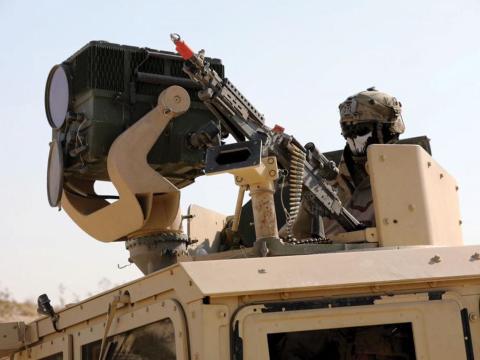International Contracts
Portuguese Upgrade
Five Portuguese P-3C maritime surveillance aircraft will undergo full mission system avionics upgrades. The improvements incorporate electronic support measures, acoustics, communications, electro-optic and infrared systems. The work also will upgrade management hardware and software, including controls, displays and mission computers. The first modernized Portuguese Air Force P-3C aircraft are scheduled for delivery in late 2009. Portuguese military officials believe the modernization efforts will enhance the Air Force’s ability to meet multimission requirements. Lockheed Martin won the contract from the Portuguese Ministry of Defense for the upgrades. The award is valued at $141 million (€99.7 million). The P-3C is flown by more than 15 nations. Its mission uses include antisubmarine warfare; antisurface warfare; over-water or overland intelligence, surveillance and reconnaissance; and network-centric warfare, such as command, control and communications. The platform also has the capabilities to conduct search and rescue, drug interdiction, airborne early warning and electronic warfare operations.
Production For Up to 2,500 Mine Protected Vehicles
The U.S. Army has awarded a contract for production of the Medium Mine Protected Vehicle (MMPV) for use by Army engineers and explosive ordnance disposal teams through 2015. Production of up to 2,500 vehicles is expected. The MMPV is a multi-purpose, mine-protected, 6-foot x 6-foot wheeled vehicle that Army engineers will use to conduct route and area clearance missions, command and control, mount mine-clearing systems and explosive hazards reconnaissance. Explosive ordnance disposal teams will use the MMPVs to neutralize improvised explosive devices, mines and other unexploded ordnance. BAE Systems was selected by the Army to serve as the sole producer of the MMPV. The company has been awarded an initial $20 million delivery order under the $2.3 billion program. Under the initial order, BAE will deliver nine MMPV test vehicles, test support, armor testing packages, vehicle basic issue items such as first-aid kits and repair tools, training and various contract data between May and August 2008. The U.S. Army Tank-automotive and Armaments Command Life Cycle Management Command made the first delivery order.
Communications for Aussie Amphibious Ships
An integrated communication system for two Canberra-class landing helicopter dock (LHD) amphibious ships will be developed for and delivered to the Royal Australian Navy. The system will include all external and internal communication subsystems, the Maritime Tactical Wide Area Network, information technology networks, datalinks, entertainment and training subsystems and the broadcast and alarm system. The communication solution for the LHD uses levels of integration and automation that reduce acquisition, operation and maintenance expenses. The system enables interoperability within the Australian Defence Force and with coalition forces. The development program, including the design and implementation phases, will use local technical and support capabilities by working with Australian equipment suppliers. L-3 Communications received the competitively bid, seven-year, $109 million contract from Tenix, an Australian defense contractor. Tenix and its partner Navantia signed an LHD contract in October to construct two amphibious ships for the Australian Defence Force.
Missile Defense Test for Passenger Aircraft
An infrared aircraft missile defense system will be tested on passenger aircraft. The tests will evaluate the systems compatibility with daily passenger airline operations and maintenance. This is the third phase for the U.S. Department of Homeland Security’s (DHS’s) counter-Man-Portable Air Defense System (MANDPADS) program’s research development activities. As part of the counter-MANPADS program, the JETEYE aircraft missile defense system will be installed on up to three American Airlines aircraft. The airline company will evaluate the system. JETEYE is based on existing directable infrared countermeasures technology that is used to protect military aircraft. It will be the only system installed on both cargo and passenger airplanes. The JETEYE system’s missile-defeating technology will not be tested as part of the contract because that evaluation was carried out at government test ranges during an earlier phase of the program. BAE Systems received the $29 million award for the system testing from DHS.
Helicopter Training Ordered
MRH90 helicopter training systems and services have been ordered, and two MRH90 full-flight and mission simulators (FFMSs), training facilities and comprehensive engineering and support services will be provided. The FFMSs will be delivered in 2012 to new training facilities being constructed at the
Submit information about international contract awards to signalnews@afcea.org.



